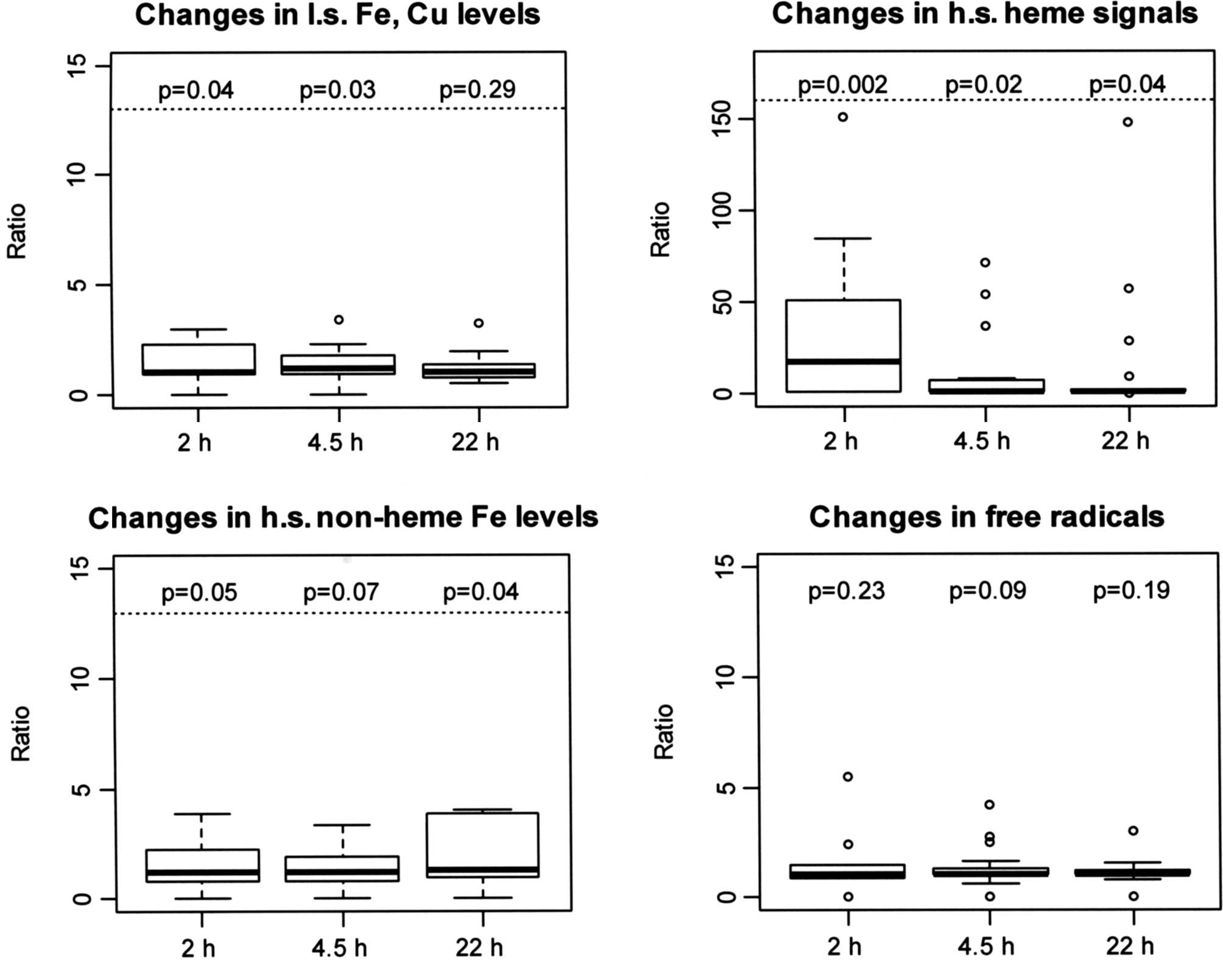|
1.
|
Yu Y, Wong J, Lovejoy D, Kalinowski D and
Richardson D: Chelators at the cancer coalface: desferrioxamine to
Triapine and beyond. Clin Cancer Res. 12:6876–6883. 2006.
View Article : Google Scholar : PubMed/NCBI
|
|
2.
|
Nordlund P, Sjöberg B and Eklund H:
Three-dimensional structure of the free radical protein of
ribonucleotide reductase. Nature. 345:593–598. 1990. View Article : Google Scholar : PubMed/NCBI
|
|
3.
|
Qiu W, Zhou B, Darwish D, Shao J and Yen
Y: Characterization of enzymatic properties of human ribonucleotide
reductase holoenzyme reconstituted in vitro from hRRM1, hRRM2, and
p53R2 subunits. Biochem Biophys Res Commun. 340:428–434. 2006.
View Article : Google Scholar : PubMed/NCBI
|
|
4.
|
Cooper C, Lynagh G, Hoyes K, Hider R,
Cammack R and Porter J: The relationship of intracellular iron
chelation to the inhibition and regeneration of human
ribonucleotide reductase. J Biol Chem. 271:20291–20299. 1996.
View Article : Google Scholar : PubMed/NCBI
|
|
5.
|
Shao J, Zhou B, Di Bilio A, et al: A
Ferrous-Triapine complex mediates formation of reactive oxygen
species that inactivate human ribonucleotide reductase. Mol Cancer
Ther. 5:586–592. 2006. View Article : Google Scholar : PubMed/NCBI
|
|
6.
|
Kolesar J, Schelman W, Geiger P, et al:
Electron paramagnetic resonance study of peripheral blood
mononuclear cells from patients with refractory solid tumors
treated with Triapine. J Inorg Biochem. 102:693–698. 2008.
View Article : Google Scholar
|
|
7.
|
Petering DH and Antholine WE: Reviews in
Biochemical Toxicology. 9. Hodgson E, Bend JR and Philpot RM:
Elsevier; New York: 1988
|
|
8.
|
Richardson D, Sharpe P, Lovejoy D, et al:
Dipyridyl thiosemicarbazone chelators with potent and selective
antitumor activity form iron complexes with redox activity. J Med
Chem. 49:6510–6521. 2006. View Article : Google Scholar : PubMed/NCBI
|
|
9.
|
Whitnall M, Howard J, Ponka P and
Richardson D: A class of iron chelators with a wide spectrum of
potent antitumor activity that overcomes resistance to
chemotherapeutics. Proc Natl Acad Sci USA. 103:14901–14906. 2006.
View Article : Google Scholar : PubMed/NCBI
|
|
10.
|
Chaston T, Lovejoy D, Watts R and
Richardson D: Examination of the antiproliferative activity of iron
chelators: multiple cellular targets and the different mechanism of
action of Triapine compared with desferrioxamine and the potent
pyridoxal isonicotinoyl hydrazone analogue 311. Clin Cancer Res.
9:402–414. 2003.
|
|
11.
|
Narasimhan J, Antholine W, Chitambar C and
Petering D: Inhibition of iron uptake in HL60 cells by
2-formylpyridine monothiosemicarbazonato Cu(II). Arch Biochem
Biophys. 289:393–398. 1991. View Article : Google Scholar : PubMed/NCBI
|
|
12.
|
Martinou J, Desagher S and Antonsson B:
Cytochrome c release from mitochondria: all or nothing. Nat Cell
Biol. 2:E41–E43. 2000. View
Article : Google Scholar : PubMed/NCBI
|
|
13.
|
DeConti R, Toftness B, Agrawal K, et al:
Clinical and pharmacological studies wit h
5-hydroxy-2-formylpyridine thiosemicarbazone. Cancer Res.
32:1455–1462. 1972.
|
|
14.
|
Sartorelli A: Effect of chelating agents
upon the synthesis of nucleic acids and protein: inhibition of DNA
synthesis by 1-formylisoquinoline thiosemicarbazone. Biochem
Biophys Res Commun. 27:26–32. 1967. View Article : Google Scholar
|
|
15.
|
Sartorelli A, Agrawal K and Moore E:
Mechanism of inhibition of ribonucleoside diphosphate reductase by
a-(N)-heterocyclic aldehyde thiosemicarbazones. Biochem Pharmacol.
20:3119–3123. 1971. View Article : Google Scholar : PubMed/NCBI
|
|
16.
|
Zhu L, Zhou B, Chen X, Jiang H, Shao J and
Yen Y: Inhibitory mechanisms of heterocyclic carboxaldehyde
thiosemicabazones for two forms of human ribonucleotide reductase.
Biochem Pharmacol. 78:1178–1185. 2009. View Article : Google Scholar
|
|
17.
|
Kowol C, Trondl R, Arion V, Jakupec M,
Lichtscheidl I and Keppler B: Fluorescence properties and cellular
distribution of the investigational anticancer drug Triapine
(3-aminopyridine-2-carboxaldehyde thiosemicarbazone) and its
zinc(II) complex. Dalton Trans. 39:704–706. 2010. View Article : Google Scholar
|
|
18.
|
Attia S, Kolesar J, Mahoney M, et al: A
phase 2 consortium (P2C) trial of 3-aminopyridine-2-carboxaldehyde
thiosemicarbazone (3-AP) for advanced adenocarcinoma of the
pancreas. Invest New Drugs. 26:369–379. 2008. View Article : Google Scholar : PubMed/NCBI
|
|
19.
|
Choi B, Alberti D, Schelman W, et al: The
maximum tolerated dose and biologic effects of
3-aminopyridine-2-carboxaldehyde thiosemicarbazone (3-AP) in
combination with irinotecan for patients with refractory solid
tumors. Cancer Chemother Pharmacol. 66:973–980. 2010. View Article : Google Scholar : PubMed/NCBI
|
|
20.
|
Schelman W, Morgan-Meadows S, Marnocha R,
et al: A phase I study of Triapine in combination with doxorubicin
in patients with advanced solid tumors. Cancer Chemother Pharmacol.
63:1147–1156. 2009. View Article : Google Scholar : PubMed/NCBI
|
|
21.
|
Nutting C, van Herpen C, Miah A, et al:
Phase II study of 3-AP Triapine in patients with recurrent or
metastatic head and neck squamous cell carcinoma. Ann Oncol.
20:1275–1279. 2009. View Article : Google Scholar : PubMed/NCBI
|
|
22.
|
Traynor A, Lee J, Bayer G, et al: A phase
II trial of Triapine (NSC# 663249) and gemcitabine as second line
treatment of advanced non-small cell lung cancer: Eastern
Cooperative Oncology Group Study 1503. Invest New Drugs. 28:91–97.
2010.
|
|
23.
|
Kunos C, Chiu S, Pink J and Kinsella T:
Modulating radiation resistance by inhibiting ribonucleotide
reductase in cancers with virally or mutationally silenced p53
protein. Radiat Res. 172:666–676. 2009. View Article : Google Scholar : PubMed/NCBI
|
|
24.
|
Antholine W, Knight J, Whelan H and
Petering D: Studies of the reaction of 2-formylpyridine
thiosemicarbazone and its iron and copper complexes with biological
systems. Mol Pharmacol. 13:89–98. 1977.PubMed/NCBI
|
|
25.
|
Saryan L, Mailer K, Krishnamurti C,
Antholine W and Petering D: Interaction of 2-formylpyridine
thiosemicarbazonato copper (II) with Ehrlich ascites tumor cells.
Biochem Pharmacol. 30:1595–1604. 1981. View Article : Google Scholar : PubMed/NCBI
|
|
26.
|
Alvero A, Chen W, Sartorelli A, Schwartz
P, Rutherford T and Mor G: Triapine
(3-aminopyridine-2-carboxaldehyde thiosemicarbazone) induces
apoptosis in ovarian cancer cells. J Soc Gynecol Investig.
13:145–152. 2006. View Article : Google Scholar : PubMed/NCBI
|










